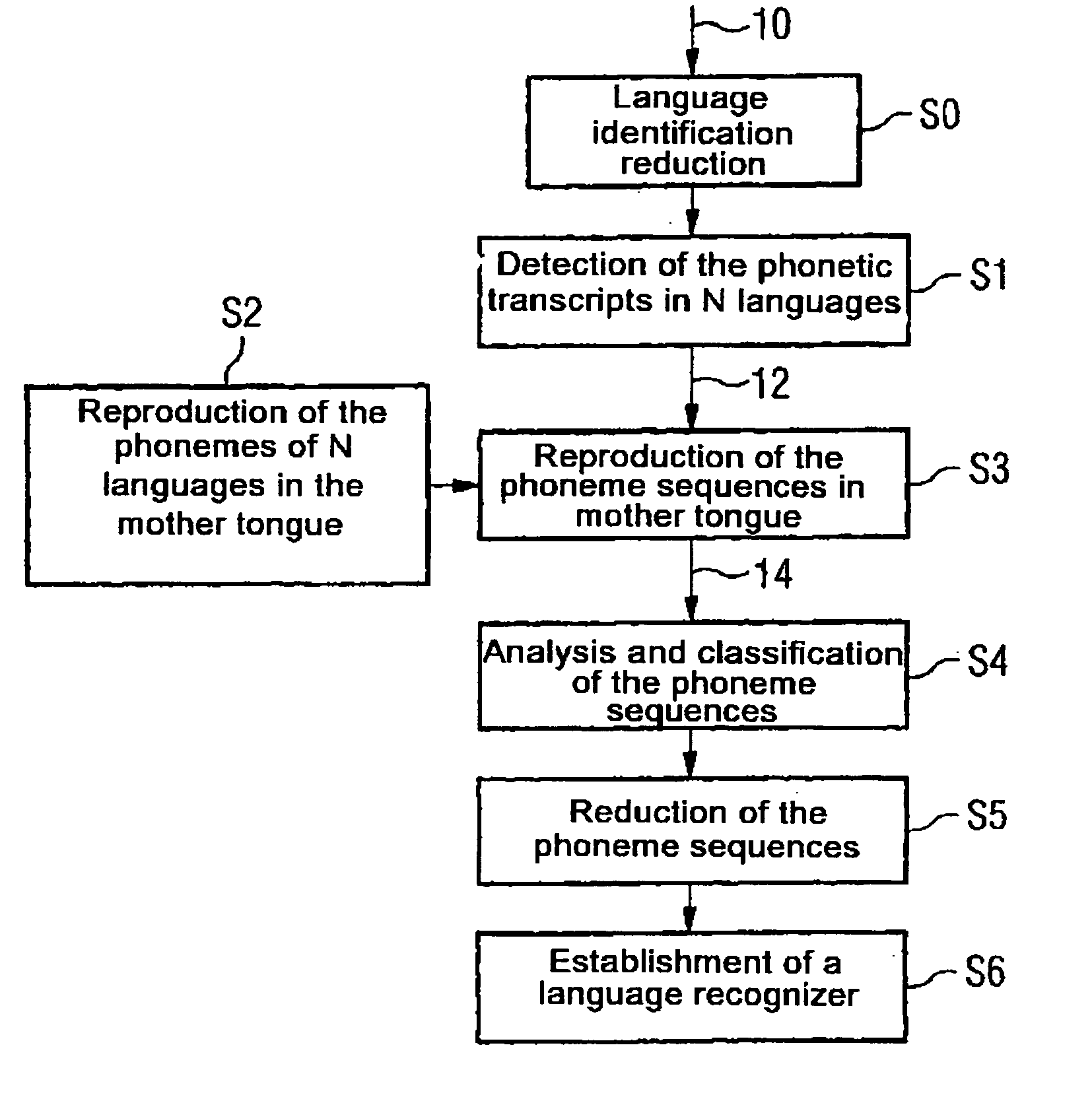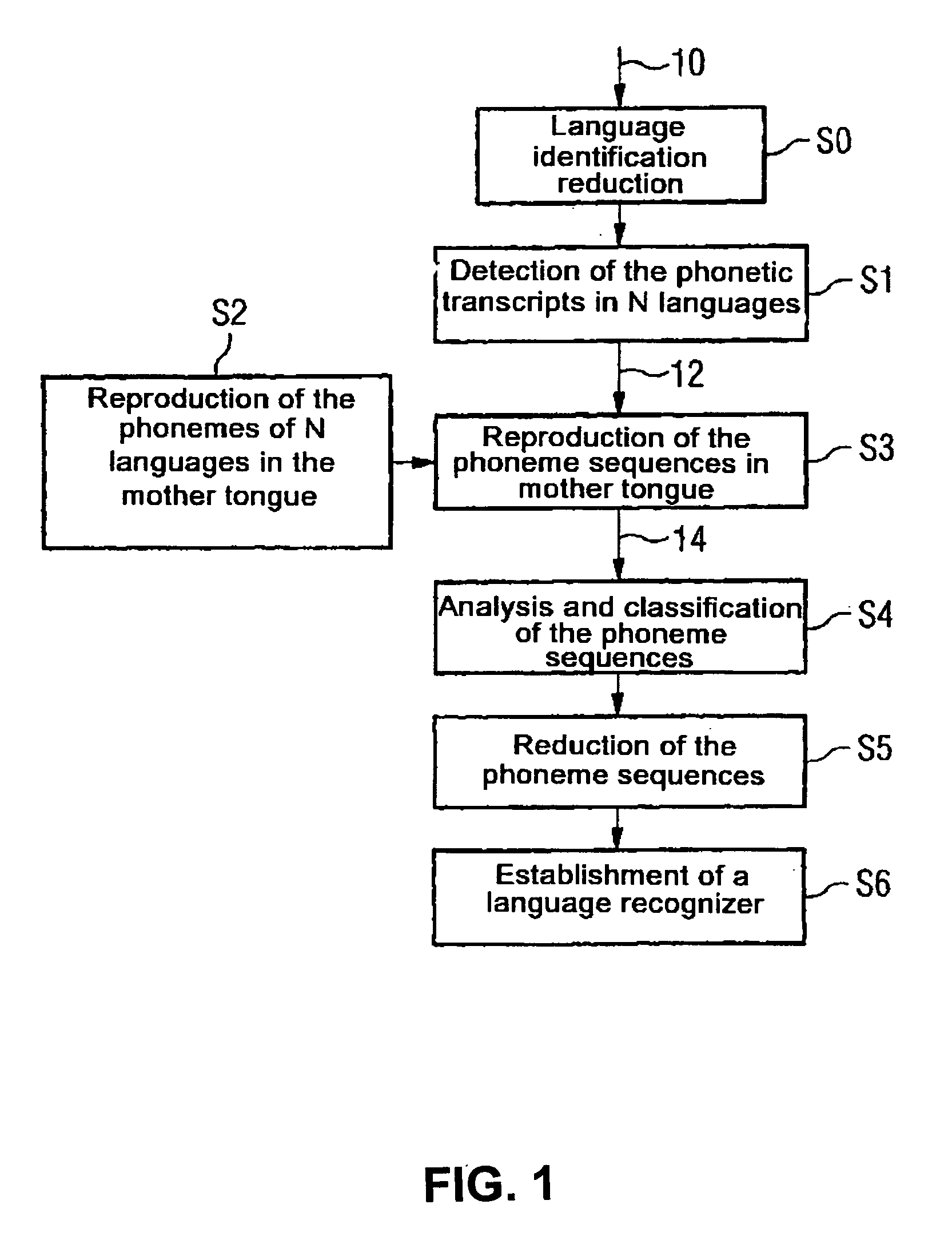Operating method for an automated language recognizer intended for the speaker-independent language recognition of words in different languages and automated language recognizer
an automatic language recognition and speaker-independent technology, applied in the field of operating methods of automatic language recognition for speaker-independent language recognition of words, can solve the problems of burdensome converting words from different languages, phoneme sequences to be realized, and inapplicability of mobile terminal devices such as mobile or cordless telephones to wholly incorporate this configuration, etc., to achieve simple implementation and reasonable cost
- Summary
- Abstract
- Description
- Claims
- Application Information
AI Technical Summary
Benefits of technology
Problems solved by technology
Method used
Image
Examples
Embodiment Construction
[0018] Under an exemplary embodiment, phonetic transcripts of words for N various languages is determined and then reprocessed and applied to a phoneme-based monolingual language recognizer. This procedure works under the assumption that a user of the voice recognizer normally speaks in his / her mother tongue. The user may also pronounce foreign-language words, such as names, with a mother-tongue nuance, (i.e. an accent), that can be roughly modeled by a mother-tongue language recognizer. The operating method is therefore based on a language defined as the mother tongue.
[0019] Each language can thus be described with different phonemes suitable for the particular language. It is known, however, that many phonemes in different languages resemble one another. An example of this is the “p” in English and German.
[0020] This fact is utilized in multilingual language recognition. In this case a single Hidden Markov model is created for the collection of languages, by means of which sever...
PUM
 Login to View More
Login to View More Abstract
Description
Claims
Application Information
 Login to View More
Login to View More - R&D
- Intellectual Property
- Life Sciences
- Materials
- Tech Scout
- Unparalleled Data Quality
- Higher Quality Content
- 60% Fewer Hallucinations
Browse by: Latest US Patents, China's latest patents, Technical Efficacy Thesaurus, Application Domain, Technology Topic, Popular Technical Reports.
© 2025 PatSnap. All rights reserved.Legal|Privacy policy|Modern Slavery Act Transparency Statement|Sitemap|About US| Contact US: help@patsnap.com


